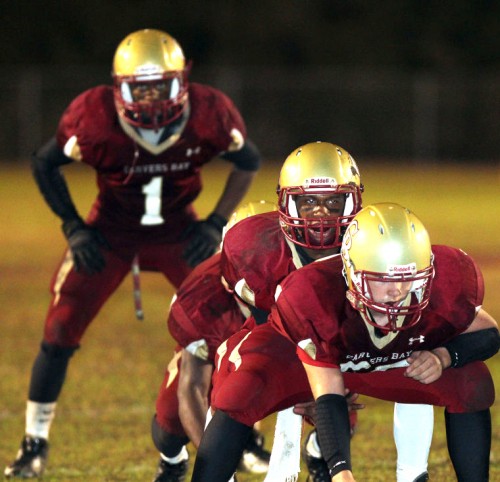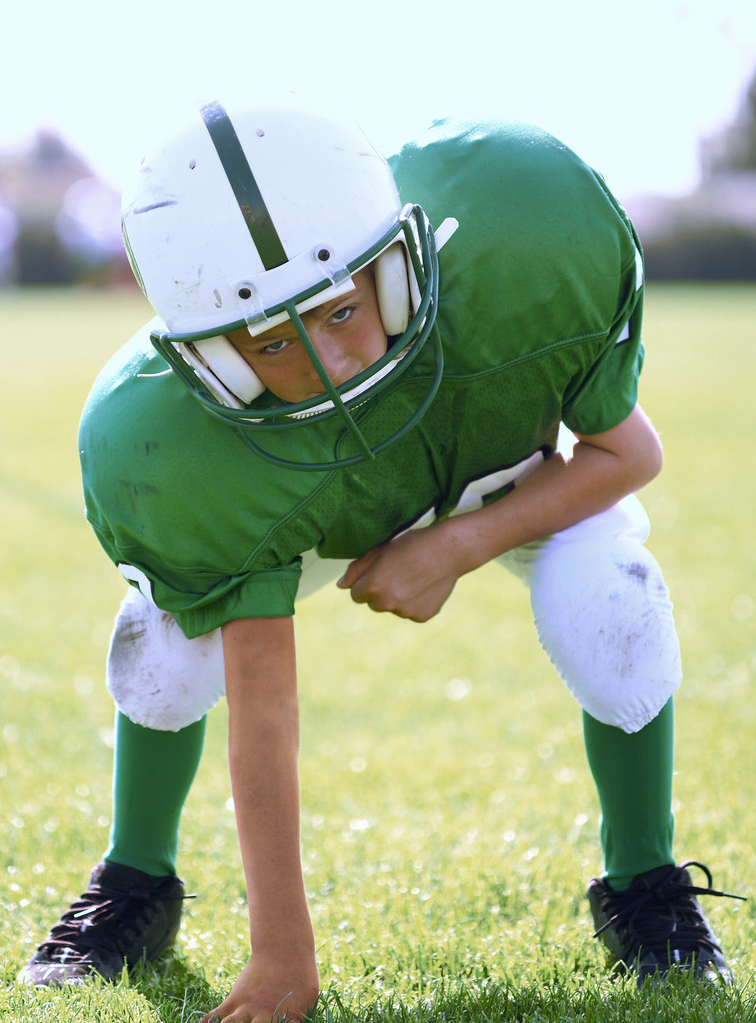Football Causes Brain Damage Without Concussions
You may be too young to remember, but a hugely profitable company at one time saturated the airways with a television commercial showing a burly football (American) player in full uniform speaking to the camera in a nearly Neanderthal or mentally challenged dilect saying “buy one – get one free!”
Changes in brains noticed even without concussions
What they were depicting in the commercial was the dim-wittedness of football players recognized by many even back many years ago before scientists actually began studying the verity of people’s suspicions that the sport caused brain damage.
Just for the record, I didn’t think it was funny back then and feel even less so now that we are discovering actual data about what happens to kids brains when they are repeatedly impacted – even inside a helmit – and even for “fun.”
Football Player’s Brains
You must realize by now that the past few years have seen an amazing increase in the amount of very specialized studies of the brains of athletes, especially football players. After the deaths and permanent brain injuries being linked to professional players, money for research into the “why’s and wherefore’s” has simply come out of the walls.
And, our amount of understanding has increased as well; including this latest research out of Oklahoma.
Latest Study Results
In a very expensive study, researchers did high-resolution anatomic MRIs of 75 NCAA (National Collegiate Athletic Association) Division I football players and “control” students.
Twenty-five were players who had a history of actual concussion, 25 were football players who had never had a concussion and 25 were healthy college students who had never played football. The tests measured brain volume as well as standardized tests of cognitive function.
There were some interesting, and a bit surprising, findings:
- There was smaller bilateral hippocampal volume in college football players compared with healthy nonplayers.
The hippocampus is an important part of the brain nestled deep in its center having a whole lot to do with memory (see below), and it’s significantly smaller in all football players.Compared to their non-football playing counterparts, the size of football player’s hippocampi is 1788 μL smaller if they’ve had a concussion and 1027 μL smaller if they haven’t.
Not only that but BOTH of them are smaller (there are two, one on each side). And, on average, the right one was 2% smaller than the left.
- Football players with concussions also had smaller hippocampal volumes than players without concussions.
Not only are all football player’s hippocampi smaller than “regular” students, but having a concussion makes it even smaller.The 761 μL difference between concussed and non-concussed football players also reaches statistical significance according to the research study.
- The number of years playing football was inversely linked to hippocampal volume.
In fact, merely looking for a correlation between the length of time football is played by the student and hippocampus size is statistically significant.The longer a person plays football the smaller is their hippocampus.
- The number of years playing football was inversely linked to reaction time.
Several cognitive tests were also done on all the players and controls which showed less variability except in one area.In both player groups, there was a statistically significant inverse relationship between the number of years football was played and the player’s reaction time – more football, slower reaction time.
Hippocampus and Football
What is this hippocampus thing anyway? Does size matter?
Any of you who have ever dissected a brain in science class will remember that its tissue is grey and feels kind of rubbery. It also has sections of tissue which you can tell are different just by looking at it with your naked eyes.
Such is a small section of tissue down near the center of the brain in a semi-circular shape – the hippocampus; and, it has a WHOLE LOT to do with memory. Well at least we know that now largely due to a very unfortunate accident to a boy which was studied by doctors for a very long time.
Really, the best way you can understand this is to watch a very short description of what happened to the boy, so I’ll wait while you take a short break to watch What happens when you remove the hippocampus?
Adds to Other Studies
The researchers reporting this study are the first ones to disclaim that all we now know is that the football players in the study have smaller hippocampi than the non-football players and it seems to be related to the length of time they played.
We do NOT know that the amount of smallness actually causes mental issues and/or what they might be. We do NOT know that football players in any other location have the same issue. We do NOT know what the mechanism is which produces the smallness or if it also occurs in other similar contact sports. There are a lot of things we still don’t know.
That said, these results seem to align with already existing research results about football players, brain changes and reaction times. An example would be the research which shows that the more hits a football player’s head takes during a season correlates with the amount of white matter changes which show up on diffusion tensor imaging of the player’s brain, even in the absence of concussion.
I said that there’s still a lot that we don’t know, but the cards seem to be stacked against football being without significant detrimental effects. I’m afraid that research looks like it’s going to force new recommendations that many aren’t going to like.
[JAMA. 2014;311:1883-1888. Abstract]
11 Posts in Childhood Concussion (concussion) Series
- Helmits?! Do they prevent concussions? – 5 Apr 2017
- Video- concussion management – 30 May 2016
- Video: Concussion 101 – 6 May 2016
- TBI, concussion and early nutrition – 28 Apr 2016
- 5 things to know – 12 Sep 2015
- Football and brain damage – 21 Aug 2015
- 10 scary issues – 18 Jun 2015
- Reading test a predictor of concussion – 30 May 2014
- New guidelines for sports – 27 Jul 2013
- More dangerous than we thought – 24 Jul 2013
- Childhood Concussion Series: Intro/Index – 23 Jul 2013



